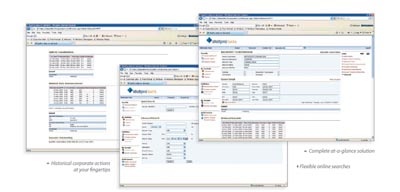Some of you may have seen the news late last week that StatPro has launched several new features as part of its Complex Asset Pricing (CAP) service. For those of you who missed the news on the Financial Technology Forum or Bobsguide, we thought we’d recap the announcement here so you can get all the latest on this unique service. Here’s the 411:
StatPro’s CAP service is a web-based application that values a wide range of illiquid assets including hard to price fixed income instruments such as European ABS and MBS, Credit-Linked Notes, credit default swaps, interest rate swaps and a range of other OTC Derivative instruments. The independent valuation service also offers three levels of service for price challenge.
We see this as a major breakthrough in the CAP service: the enhanced version draws on our independent valuation data, so there’s a transparent view of the numbers behind the models our clients build to create complex securities. Now, CAP delivers traditional and liquidity risk numbers along with clean and dirty pricing which will reduce exposure to valuation risk.
The inclusion of both clean and dirty prices lets asset managers distinguish between capital earnings (from the clean price of a bond) and the interest earnings (coming from the coupon accruals) both for bonds and derivative instruments, providing a more holistic approach to valuation. And we provide a full range of Greek information for each security which as risk departments know is critical in determining an asset’s sensitivity to market conditions.
The CAP service isn’t just a list of features, though. What we’re really offering our clients is a single, web based tool for assessing asset-level risk. The solution cuts cost and man hours dramatically while improving portfolio risk management and performance reporting.
Compare that to the large, complicated hardware systems that many asset managers currently use – why wouldn’t you consider a change?
